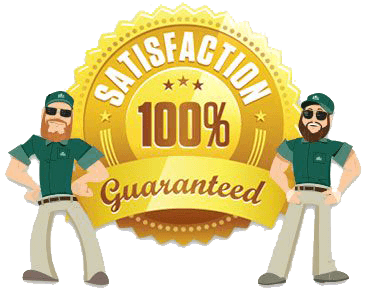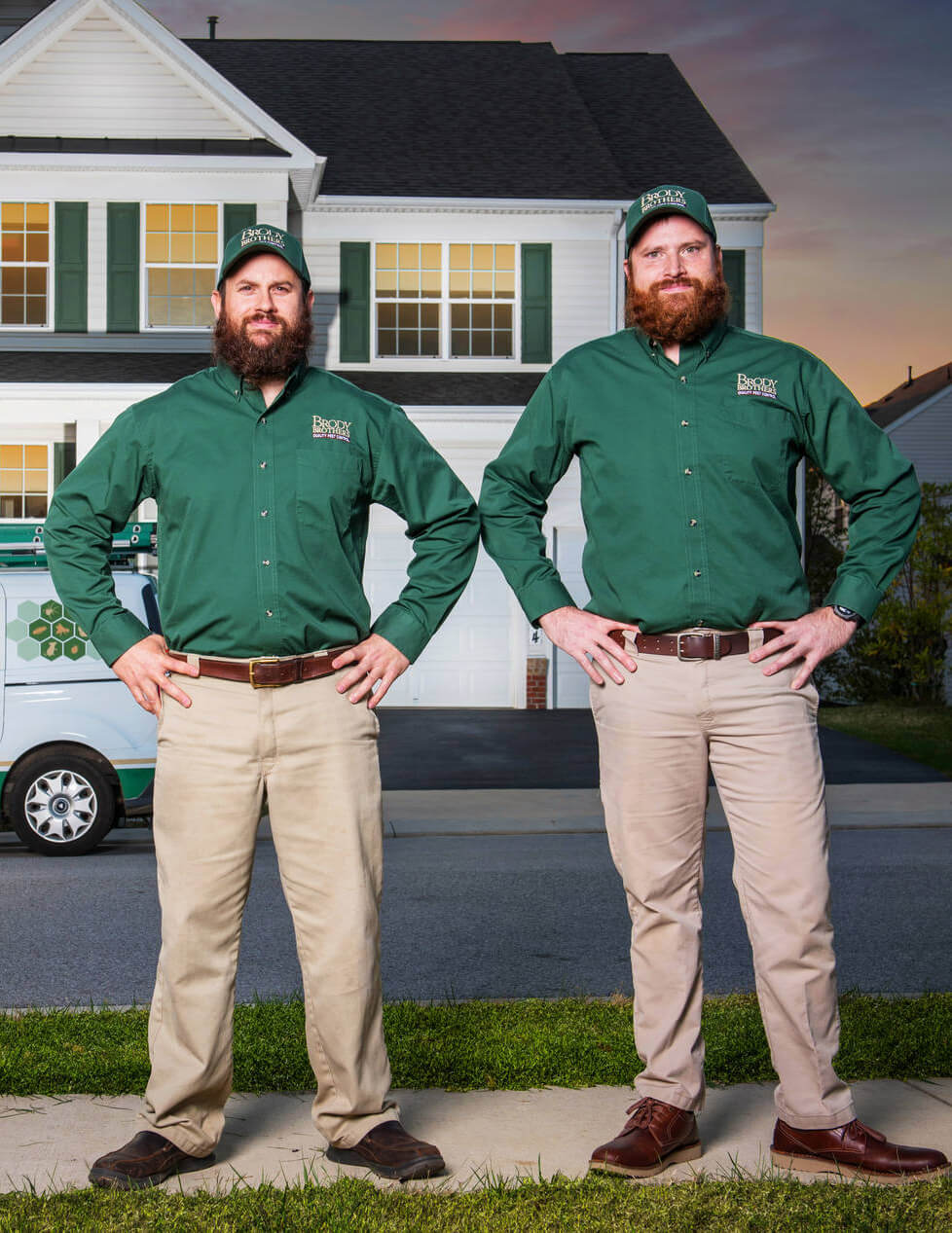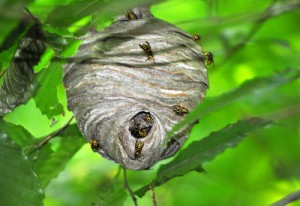Unlike some stinging insects, the European hornet is most active at night—and it loves to fly towards the light. So if your lights are shining through your windows each night, don’t be surprised if the European hornet launches itself against your window trying to get in.
You’ll know you’re dealing with a European hornet if the insect:
- Is ¾ to 1 ⅜ inches long (queens are larger than workers)
- Is brown in color
- Has yellow stripes on its abdomen
- Has a light-colored face
European hornets are sometimes confused with bald faced hornets.


European hornets build nests in hollow trees, attics, barns, and the hollow spaces between walls. They cover any exposed areas of the nest with paper that they make by chewing wood fibers and mixing them with saliva to create a pulp.
Each spring, the queen finds a suitable nesting site, builds the nest and lays the first eggs, which become workers. The nest grows to hold 200 to 400 workers. New queens are created towards the end of the season; unlike the workers and the old queen, they live concealed throughout the winter.
European hornets feed on insects like grasshoppers, yellow jackets, flies and honeybees. But they sometimes prefer the sap on trees and shrubs as food, eating a girdle around twigs and branches and harming the tree or shrub in the process.

As a Home Protection Plan customer, if you’re not satisfied with our pest control service, we will service your home at no additional cost until your issue is solved or receive your money back from your last scheduled service.

Keep an eye out for European hornet nests whenever you’re working around your yard, and if you find one, take care not to disturb it. Although they can sting—and sting multiple times without dying—European hornets are not usually aggressive and will attack primarily when they or the nest are threatened.
If you have a nest of European hornets on your property you should leave them alone if at all possible. If you must remove the nest, you can try using insecticides, but it’s not an easy job. You’d have to:
- Locate the nest during the day to find the location of its hole
- Cover yourself carefully with heavy, protective clothing
- Spray the nest at night, being careful not to shine the light directly into the nest (remember they like to come through the night)
- Hope you’re getting the right amount of insecticide into the right place
A much easier and safer way to handle the problem is to call Brody Brothers. We have the equipment and the experience that will ensure that your hornet problem is taken care of quickly and properly.


